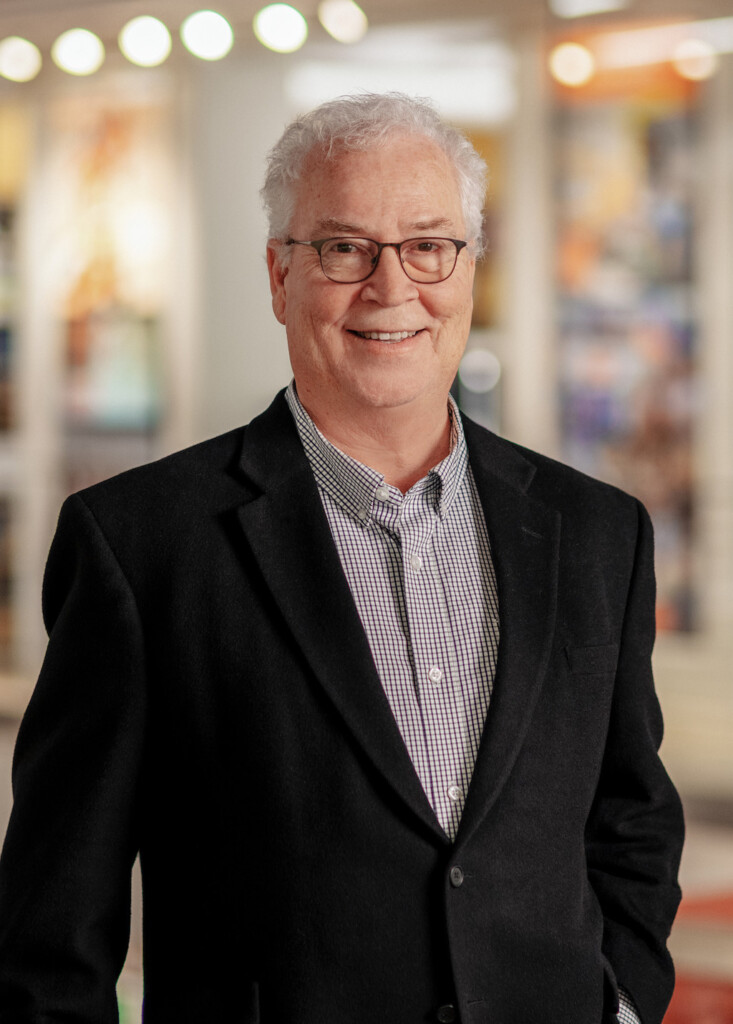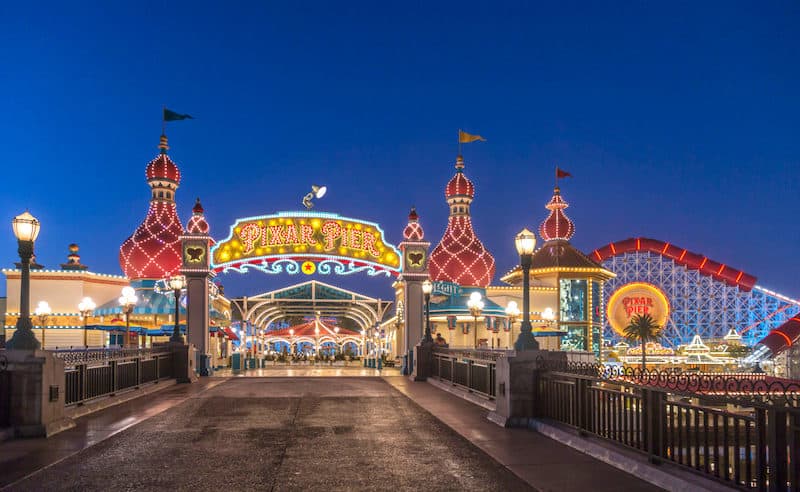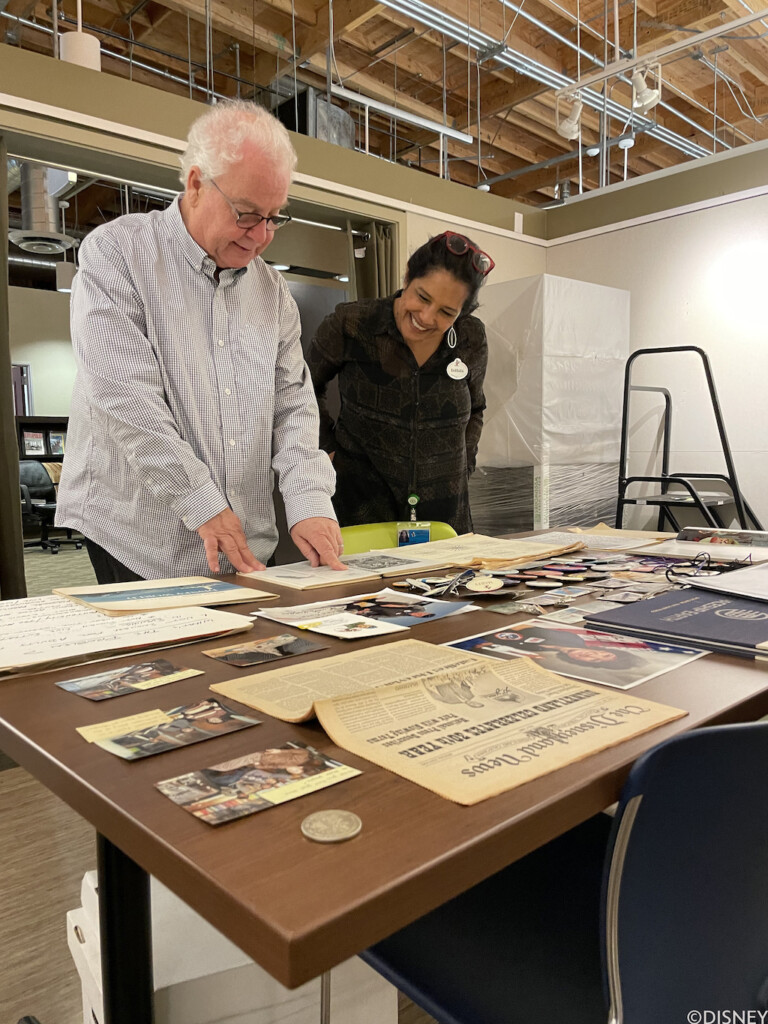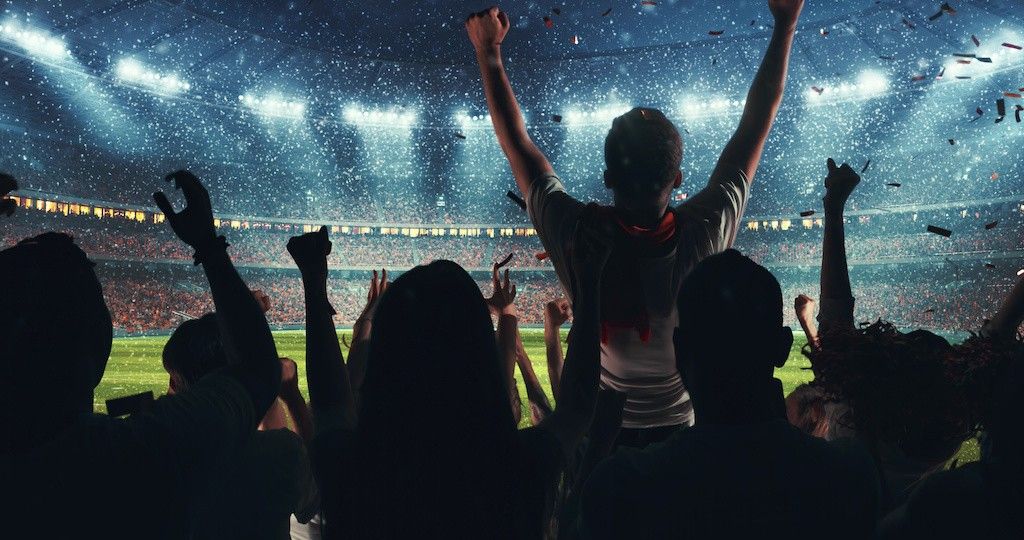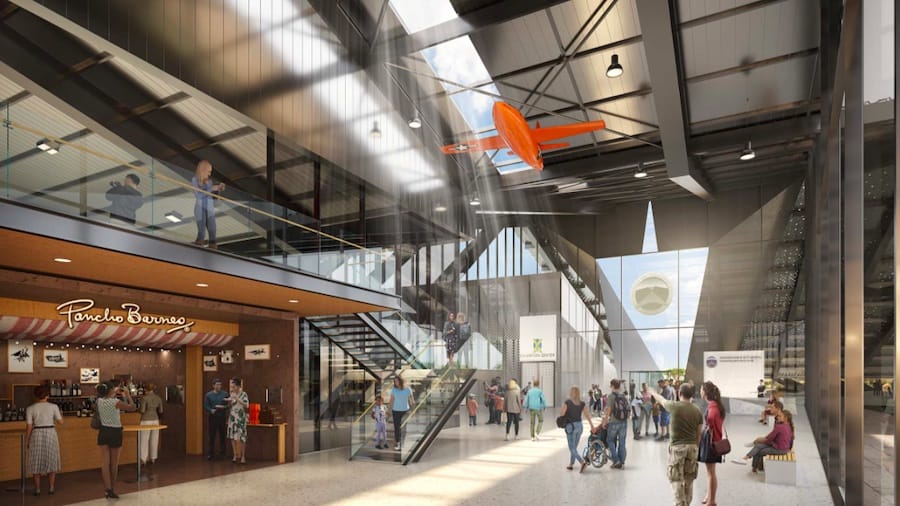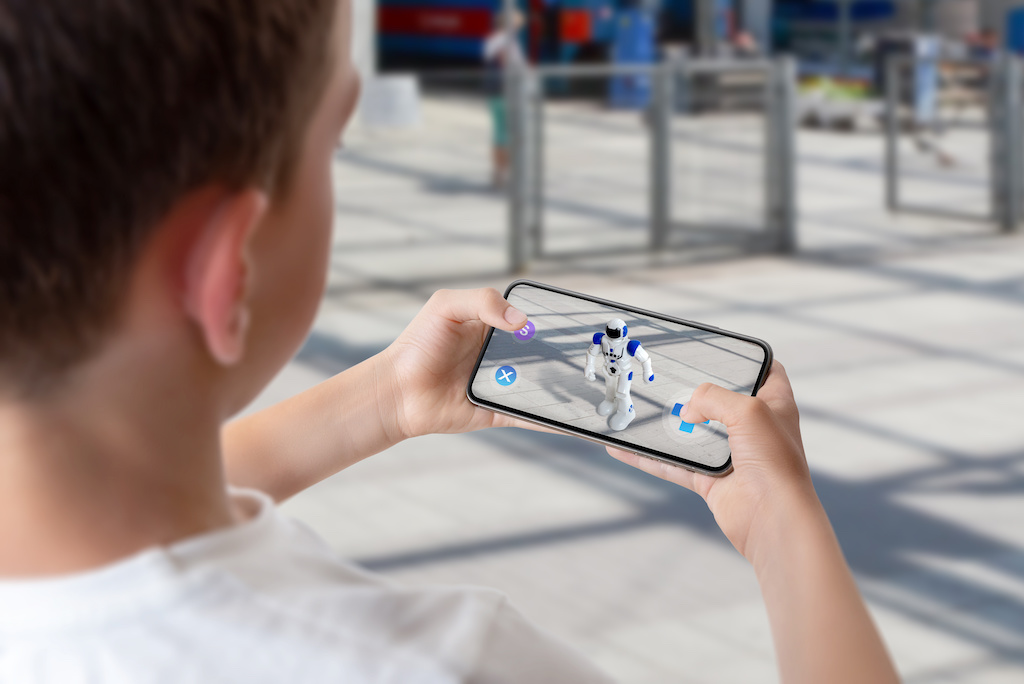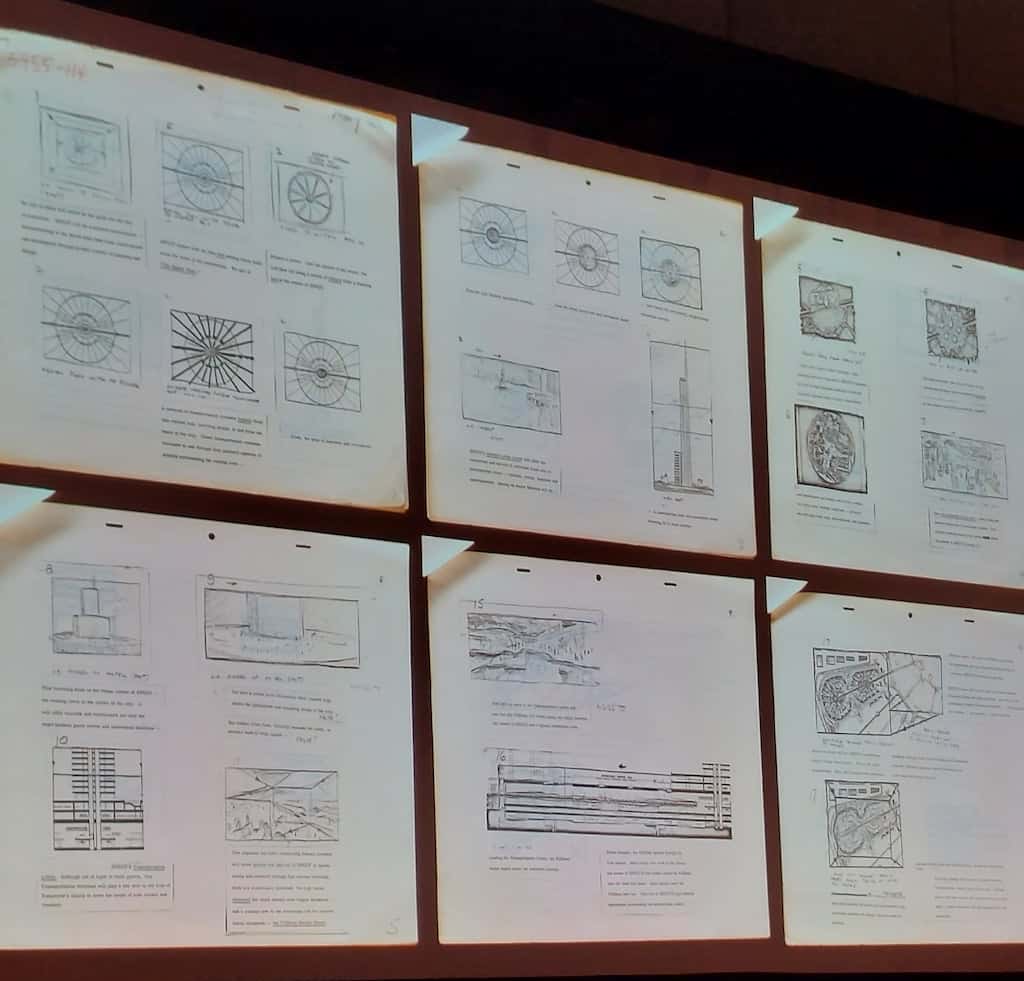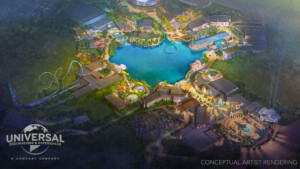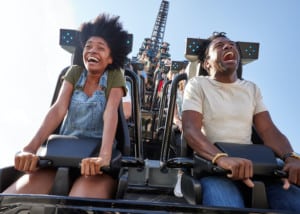Bob Weis, former president of Walt Disney Imagineering, has joined worldwide architecture and design firm Gensler as global leader of immersive experience design.
A visionary within the entertainment industry, Weis brings more than 30 years of leadership in creating, designing, and developing some of Disney’s most iconic projects around the globe.
He took the time to talk to blooloop about his career and experience in pioneering large-scale ground-breaking and story-driven experiences, and the wider scope for engaging, immersive experiences as the once-rigid boundaries between sectors dissolve in a post-pandemic world.
Storytelling and the first chapter at Disney
“My design background was story and art-driven, from the very beginning,” he begins. “When I was in university, I studied architecture, but I spent probably half my time in the theatre department. I got very attuned to storytelling to a script, to a story with actors, experiences, and with the audience. It influenced my architectural design to be very story-driven and experience-driven.”
Right out of college, he joined Walt Disney Imagineering:
“I was able to combine those two interests because that’s the kind of design work that Disney does. I was lucky that the Imagineering group was expanding right as I got out of college,” he adds. “They were doing Epcot for the first time. They were doing Tokyo Disneyland, the first offshore Disney theme park around the world. So, there was a big expansion. A big generation of us came in right then. I was very lucky.”
“I worked on a lot of different projects, including the Tokyo DisneySea Project, which is the second Tokyo park I worked on.”
After a few years in Tokyo, he became the head of the creation of the third theme park in Walt Disney World, the Disney-MGM Studios:
The solo years
He then left for a while to run his own consultancy company:
“I enjoyed working primarily for museum clients,” he says. “For example, I enjoyed interacting with the Smithsonian, with the Museum of Science and Industry in Chicago, with Paul Allen, the Microsoft co-founder. When he was alive, he was interested in museums about many topics related to the arts, the human mind, and the sciences. His first museum in Seattle was the Experience Music Project which brought to life music, one of his favourite topics.”
At this point, Weis got a call from Disney:
“There was a possibility of going back to work on a project we had almost done in Sydney, but then the priorities shifted. We didn’t do that project in Sydney.”
“Disney had built a park that wasn’t very successful in California: Disney’s California Adventure (DCA). It just didn’t work, especially right next to Disneyland, which is the richest, most wonderful thing that was designed by Walt Disney himself. I took on the challenge, with a small team, to completely reinvent Disney’s California Adventure.”
This was a daunting task:
“I remember thinking, ‘This is impossible. Why am I doing this?’ But we did it; we changed it radically.”
Bob Weis returns to Disney
The change, he explains, was achieved largely through intangible elements:
“How do you make people love a place? People just didn’t love it. The employees didn’t love it. The guests didn’t love it. A lot of the attractions were very popular. But people would just come to them, and then go back to Disneyland because Disneyland was a place they loved. So, we added those intangibles – richness, comfort, and a sense of well-being.
“I always tell people, yes, we did Cars Land; we did World of Color, we did a lot of things, but we also planted 1200 trees. We redid the entrance. As in a play or a movie, if the first act doesn’t work, it’s hard to engage people. We did a lot, and it was very gratifying to see how it turned around.”
People, it turned out, now loved it:
“It didn’t just help DCA: it helped the entire Disneyland Resort come into its own. It was interesting – a radical change.”
About halfway through the process, he received another call, this time from Robert Iger [Disney CEO]:
“He said, ‘The future of the company is in China. I think you should start working on a China park.’ So, for a crazy couple of years, I worked on China and DCA at the same time, but eventually focused completely on China for about seven years, for Shanghai.”
Reinventing Disney for a new audience
It was, he explains, an opportunity to reinvent Disneyland for another generation, and for a non-American audience:
“It was wonderful because we got to reach out and build a cultural team of Chinese designers and writers. They taught us about China; we taught them about Disney. That culture exchange is really what built that project – a project that, to use a term that Bob [Iger] coined, contrived to be authentically Disney, and distinctly Chinese.”
As an aside, he adds:
“It has been very gratifying, after COVID, to see it has become, in many ways, what you see in Europe, which is that the audience owns it. They own the park, they go to the park, they’re loyal to the park, and the park is loyal to them. It’s incredibly well attended.
“People are tired of being at home; they want to go out and enjoy things together. If you were looking for validation that mankind loves to tell stories and loves to go out after three hundred thousand years of human history, then this post-COVID period is that validation.”
On returning from Shanghai, Bob Weis became the president of Imagineering for six years.
“I thought, ‘Well, this will be easy. It’s just more projects. It’s just a little bit bigger.’”
New challenges
As it transpired, it was not easy.
“There was the crisis around George Floyd, and the crisis around COVID, with projects around the world put on hold, then put back on, and then put on hold again. There was the need to furlough lots and lots of employees and figure out how to rework the strategy.
“It was a very challenging couple of years, but the resilience of creative people is remarkable. Nobody had worked completely from home around the world before. We did our best to support people. We got projects back open. In the last year, we have opened a lot of projects at Disney that were almost entirely done during COVID on iPads.”
During this process, he collaborated a great deal with Gensler:
“I got to know Gensler on DCA, and I worked with Gensler in Shanghai. Then, when I started thinking about wrapping up my Imagineering time, I reached out. I had become very interested during COVID by the global nature of this work, and the fact that, as the audience returns, people want to do more together in the worlds that they live in.
“With cities having gone through so much, and having lost tenants, and department stores and visitation, how could we use the same tools that we have built in the storytelling arena of parks to bring people things where they live, and to help bring vibrancy back to cities?”
Bob Weis on new visitor-driven trends
In terms of the opportunities afforded by visitor-driven trends, Weis comments:
“People want to go out together. They want to celebrate together and they want to be in safe public places where they can do fun things. But they also want to have more to say about what they do and a more personal impact. They want to drive, which means a rethinking of the didactic storytelling that is still there.
“The Little Mermaid will still have an impact on the parks, of course. But I like the idea of more agency, more user-generated content.”
In short, he explains:
“I came to Gensler because there isn’t another place where there are 50 plus offices around the world, with talented people in every one of them. Every day I talk to somebody from Costa Rica or Japan, or Paris or Dubai. It’s a rich, seamless, global network of talent.
“I’m always excited about talent and about different kinds of problems. I’m starting this immersive and entertainment practice with Gensler, and we’ve got some new clients – I can’t talk about them specifically yet – that are going deeply into new kinds of immersive projects. It’s a new global business. It’s exciting.
“I’ve been the luckiest person in the world, I think, to have great experiences with Disney and great experiences with non-profits outside. And now, I have a chance to see the world a different way, to discover what the post-COVID experience world is going to be.”
Themed entertainment evolves and expands
This is an interesting time, as the borders between different sectors in the leisure space become blurred and themed entertainment takes on a new relevance.
“It’s interesting how many related businesses are exploring telling stories through immersive experiences,” Weis comments.
For instance, stadiums and sports facilities:
“They are coming back and saying, ‘Well, what’s the story behind this place? How do we pull another generation of baseball?’ What happens if baseball becomes your grandfather’s game, and nobody else goes?”
It’s the same question Disneyland faces: if you don’t bring another generation in, it doesn’t sustain itself:
“Sports is the same – and what is the future of retail? We’re seeing retail struggle everywhere. Retail must be more about experience, and no longer just about buying. And then there are museums, which are now saying, ‘We’ve got to intensify what an experience is. We can’t just talk to the visitor. The visitor has to talk to us and be a part of it.’
“Then there are airports, hotels. Hotels can be boring if they don’t feel like they grow naturally out of the place where they are located. Every place can feel the same; no story is told.
“This is about the opportunity to bring the entertainment and storytelling experience into things, on a global scale, that have not necessarily always been associated with it.”
Changing perspectives
Bob Weis has observed a shift in perspective over the years. He explains:
“The cultural side, which has, in some cases, viewed the themed entertainment world with suspicion, has opened up. It is realising that this is not about turning museums into theme parks, but about including great experiences in great museums.”
“At the same time, the themed design people are coming to an understanding of what a museum’s mission is about, and that education and immersive experience is perhaps different from how it is in a park. You need a different kind of storytelling, a different pace, and a different intelligence. To meet in the middle somewhere, you have to understand each other better, and I think that’s begun to happen.
“It’s incredibly rewarding to work on museum projects, then to see classes arrive in buses and experience something new; to see teachers appreciative of being able to involve their students in something that grabs and engages them and is talked about all the way home.”
Bob Weis on what makes an engaging experience
Touching on the elements of a truly engaging experience, he says:
“The word ‘immersive’, to me, carries with it the senses. It’s not walking into a room where there’s a screen – even if that screen is a mirrored floor and ceiling. It must transport us somewhere through the senses because our senses connect us emotionally. If we can hear, smell, taste, feel the cold, feel the wind, and feel enveloped in the experience, then there will be a greater connection than if we simply see things in an exhibit case, or unfolding on a screen.”
Bob WeisThe word ‘immersive’, to me, carries with it the senses. It’s not walking into a room where there’s a screen – even if that screen is a mirrored floor and ceiling. It must transport us somewhere through the senses because our senses connect us emotionally.
“It is important to envelop people in the world that you’re evoking. Every tool we have is focused on creating a journey, a story that you can follow.
“Increasingly, that story will branch in some way so that you can select aspects about it that interest you or that you want to explore. Or, in terms of the visitor’s agency, maybe you can even give back something that someone else can explore. Those are things that not only make people want to come, but, critically, to return.”
The critical point is to want people to come back:
“You want people to belong somewhere.”
Experiences that make people want to return and experience them in new ways afford that sense of belonging:
“These are experiences where all the senses tell a great story while allowing me to be involved in such a way that I can help complete or branch the story. Those elements are all critical.”
Exciting opportunities at Gensler
This brings him to what he finds particularly exciting about the work Gensler is doing in this area:
“It’s so diverse. A lot of this is cottage industry stuff right now, around the world. There are some great entrepreneurs and creators you might find on some corner of some street, and you realise they’re doing an incredible, theatrical thing with escape rooms and entertainment.”
“How do we then work with the creator to figure out how, with our global reach, to help them launch their concept to become more successful, in such a way that you don’t lose the essence of it, but more people can visit it and see it, and you can do more of them?
“In a world like Gensler’s, as a creator, you are connected to the reimagining of cities and mixed-use projects and so on all over the world, so you could, potentially, crack this nut to do 70 of these in markets that don’t overlap each other at all, bringing something special to diverse audiences.”
Bob Weis on trends to watch
Touching on emerging industry trends, he adds:
“When people talk about immersive experiences, you often see a picture of a person with a VR helmet on. Those are great. But we’re talking about communal experiences that people want to do together that involve live characters, that involve immersive worlds. There are lots of ways to do that today without putting helmets on people.”
“I think that AI and augmented reality are going to give us the ability to do things where you and I can be in the same space together, instead of being in separate spaces, isolated. That’s where the magic is going to start to happen. The ability for us to interact with an interesting story and interesting characters, to interact with a character that just takes a picture with you, that’s easy.
“But if you want to have an intelligent interaction with a character, and have a character get to know you, will require AI. On the creative level, the idea is compelling.”
Authenticity and creativity
Identifying further emerging trends, he adds:
“Some big ones that we’re seeing are concerned with authentic place. That goes back to hotels, but is also relevant to the office, and where you live. People have shifted their mindset to the 15-minute city idea. Where they shop, where their dentist is, where their car is washed and where they get their nails done are all within this secure, walkable, easily accessible city space that is their part of the city.
“It is interesting to see how that model will change as people still want to go out and do things. But it becomes their place, and there’s a storyline to their place. And when you go to the office, let’s say you have a hoteling /hot-desk office that has stations for everybody to work in. It might be incredibly efficient, but what creates a sense of belonging, what makes the difference between my kitchen table and an equivalent table in this office, is social interaction. It’s about creativity, serendipity. It’s about the possibilities of people and ideas.”
“Zoom meetings are so pre-programmed. You don’t just run into somebody and say, ‘Oh, I had an idea,’ then talk about it for a minute over coffee.
“This, of course, goes back to my Imagineering years. But it’s magical when you have six or eight people around the table and you can spread a drawing out. Everybody can have a pencil; everybody can be drawing together. You can hang it on the wall, you can put index cards up. There’s an interactivity to work and creativity.”
The future for Bob Weis and Gensler
Capturing an authentic sense of place for workspaces lies in identifying and replicating that sense of social interaction; of a capacity to influence and interact with other people creatively or innovatively.
“Then,” he adds, “why do you go to a hotel? Is it just to sleep, and get the same thing on the menu that you could get at the same hotel in New Jersey? Or do you go there because somehow that hotel feels like it enlightens you about the culture of, say, New Orleans and you feel like you’re in a special place? Every city has special assets. How do you tell more of those stories?”
Bob WeisMy personal goals, and they include Gensler, are to interact more. Not just in theme parks, but where people live and where they shop. I’m a big fan…of how storytelling can transform the brutal world that we face when we take our kids to a hospital, or must go ourselves, or face experiences that seem daunting or hard to understand.
In closing, he comments on his goals and plans going forward:
“My personal goals, and they include Gensler, are to interact more. Not just in theme parks, but where people live and where they shop. I’m a big fan – because of the work we did at Disney – of health and wellness, of how storytelling can transform the brutal world that we face when we take our kids to a hospital, or must go ourselves, or face experiences that seem daunting or hard to understand.
“Every category feels like it has potential for storytelling and betterment of experience.”
Celebrating a Disney legend
He also discovered, a few years ago, that he loves writing:
“I’m writing a book on my experiences for Disney publishing. I’m also part of a massive effort that we’re doing on Marty Sklar.”
Martin A. “Marty” Sklar, who died in 2017, a scriptwriter and construction developer, was The Walt Disney Company’s international ambassador for Walt Disney Imagineering:
“Marty ran Walt Disney Imagineering for 50 years. He started out working for Walt Disney during the opening of Disneyland, and he worked on and attended the opening of, every Disney park around the world after that. Walt especially trusted him with carrying forward his last dream, Epcot.”
“We discovered a massive archive he left behind: boxes and boxes of stuff; 2 million-plus hand-edited documents, with notes signed by Ray Bradbury, Walt Disney, so many different sources, and physical stuff, torn tickets to the first day of Epcot, models, drawings. We’re writing a massive three-volume piece on that.”
It will be, effectively, he explains, a PhD in the development of themed entertainment:
“It will start in the 1950s and go all the way through to Shanghai. For people entering this world, it will be an opportunity to chart the evolution of this from before Disneyland to the present day.”
The past and the future
Bob Weis concludes:
“I’m lucky, I feel, because, with my work at Gensler, I’m able to forge into the future, exploring where we’re going. I’m also keeping a hand in some retrospectives, reflecting on what my past meant, and what someone like Marty’s past meant.”
And in the present:
“I have two kids, and I learn from what they experience. I have a 26-year-old who is starting in the themed entertainment business, so he has his perspective of what an experience is and what he expects when he goes somewhere, and then I have a nine-year-old daughter who, in five years, went from a carousel to the fastest rides in the theme park world.
“These kids are eating a trail through experiences so that puts the pressure on us: what do we do next? How do you harness that power? If nothing else, I’ve got them driving me to explore new stuff all the time.”
Top image: Disney’s California Adventure, courtesy of Joshua Sudock/Disneyland Resort

